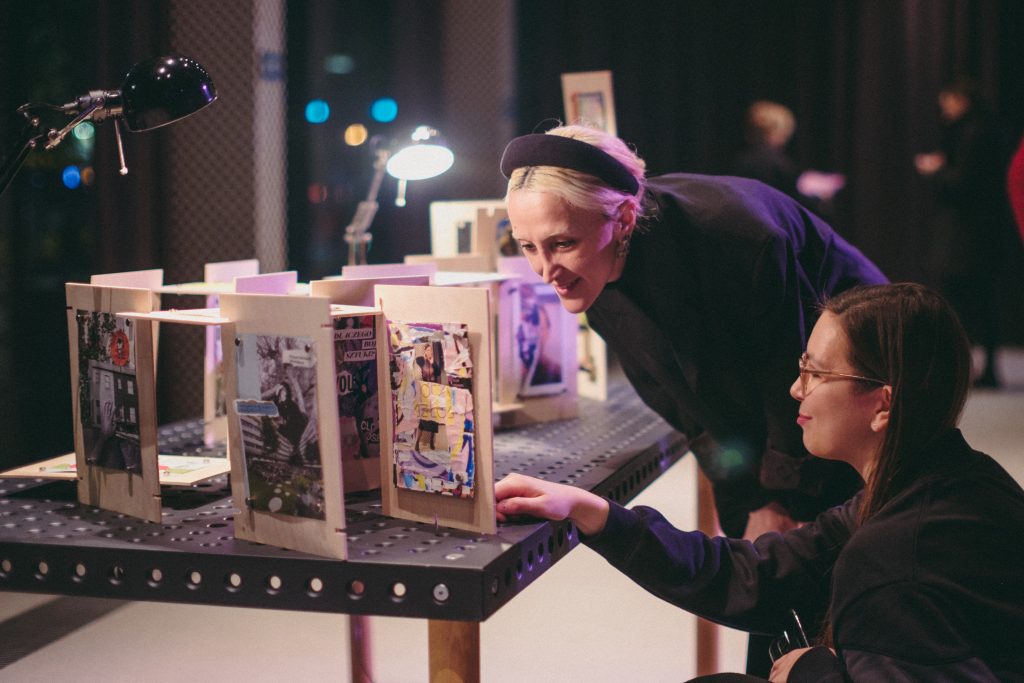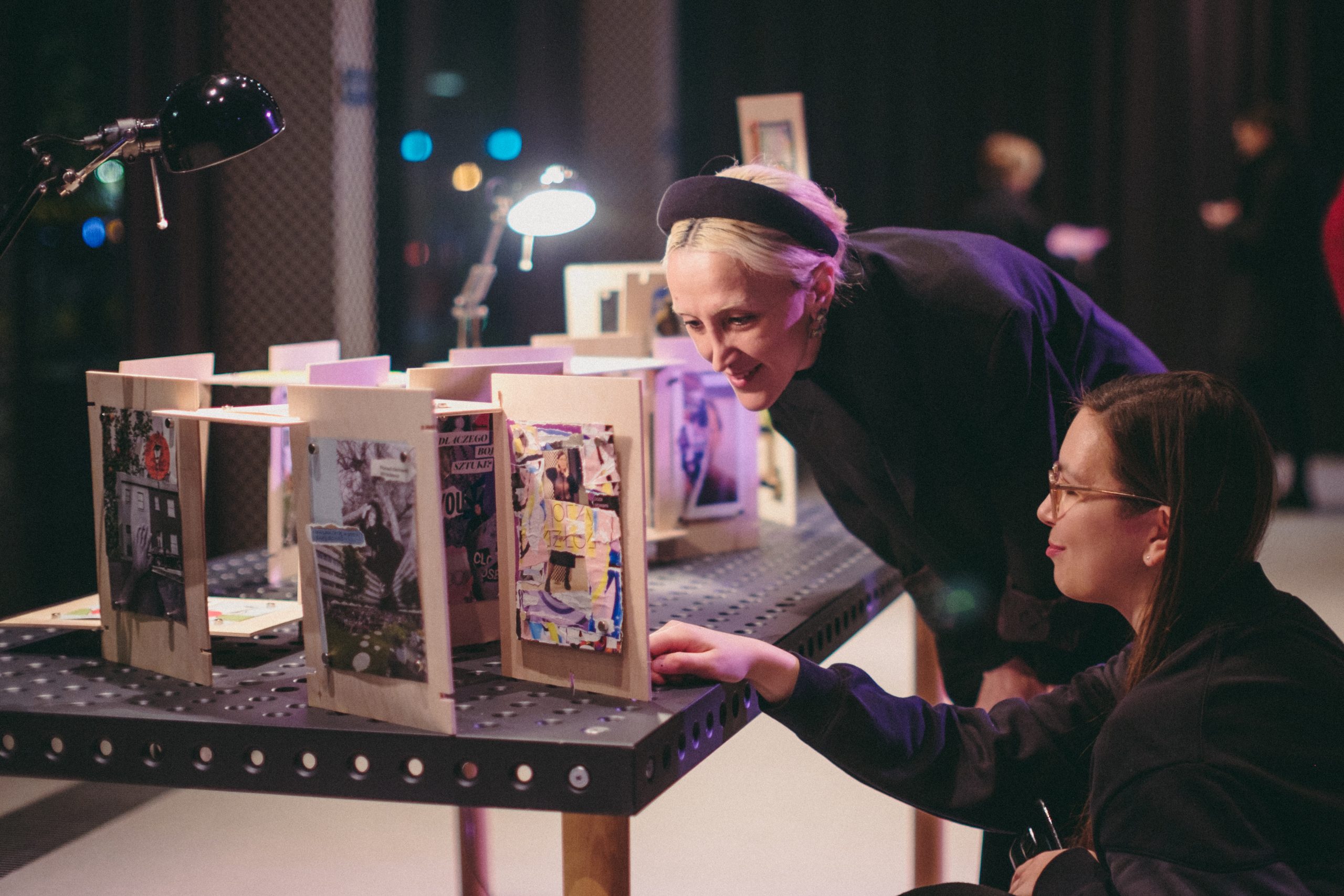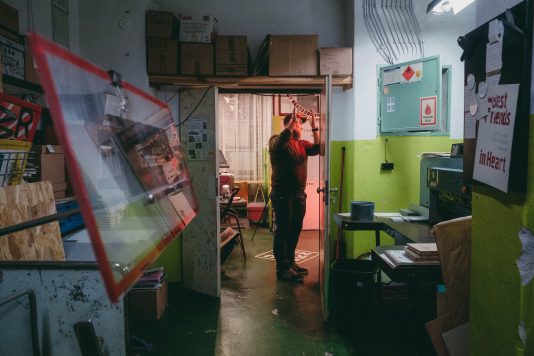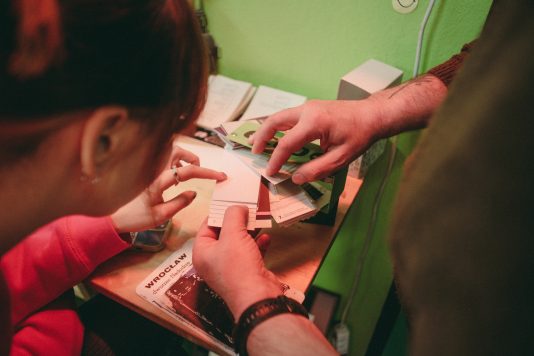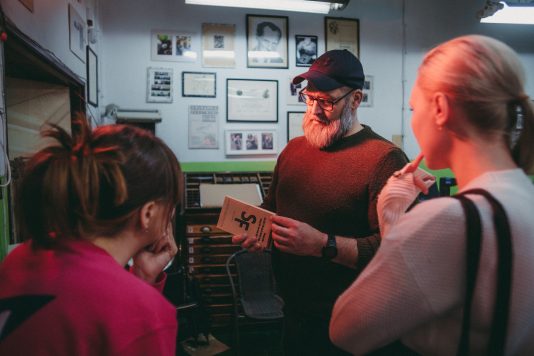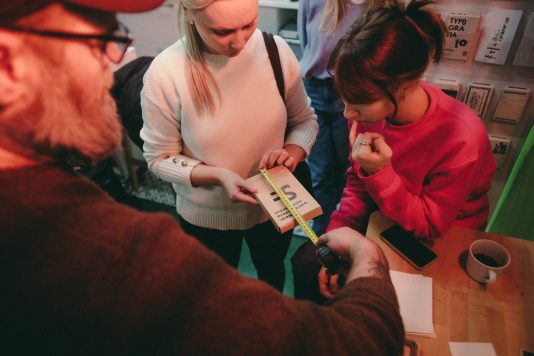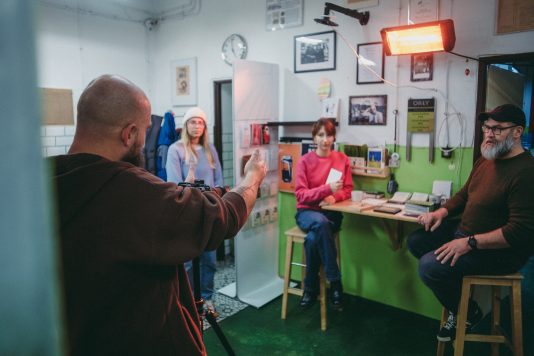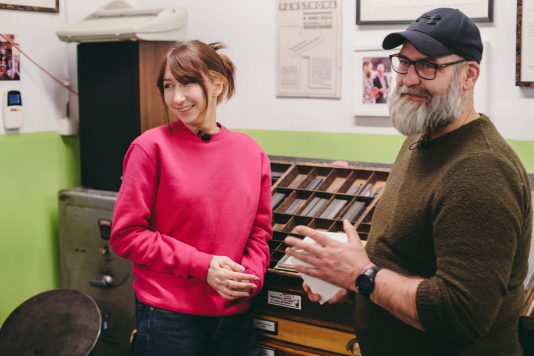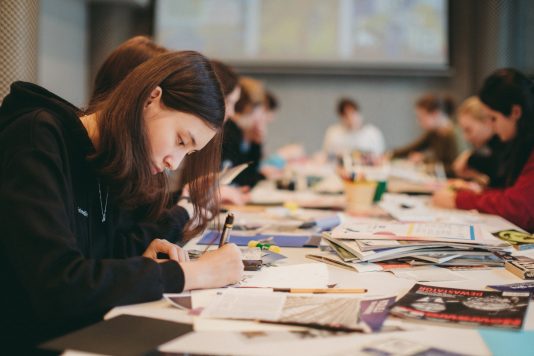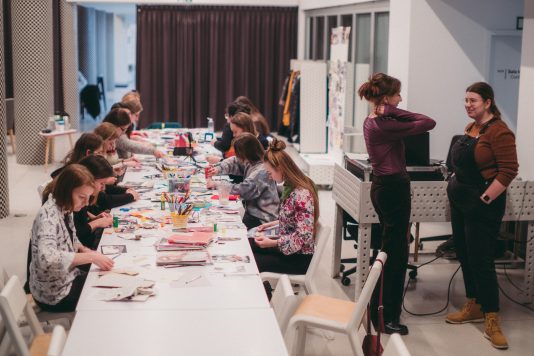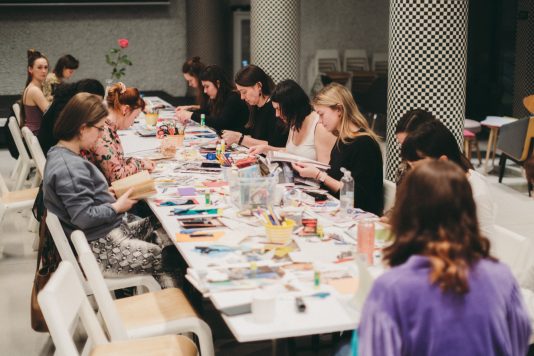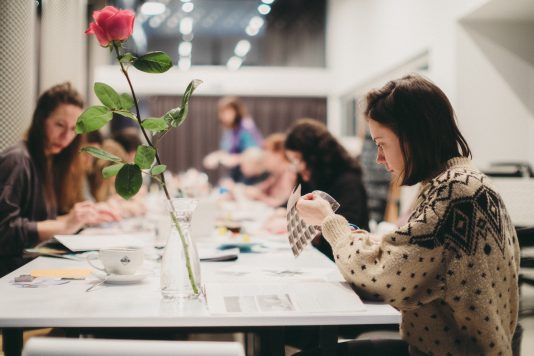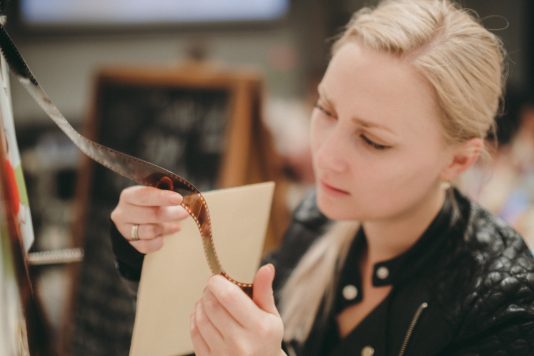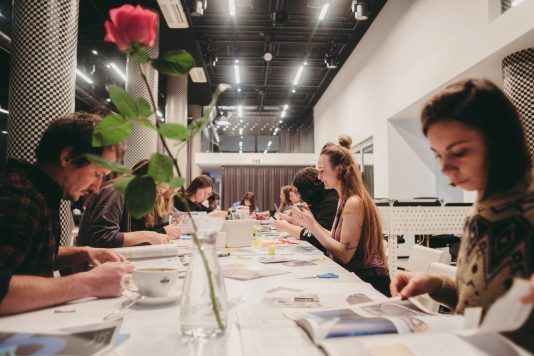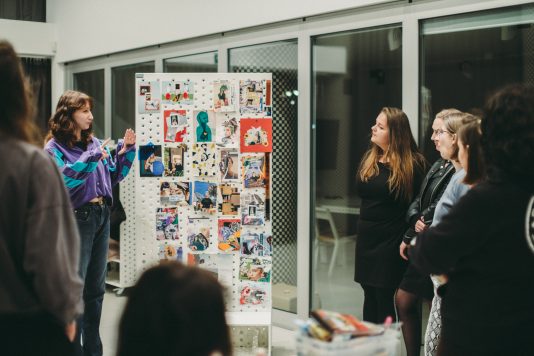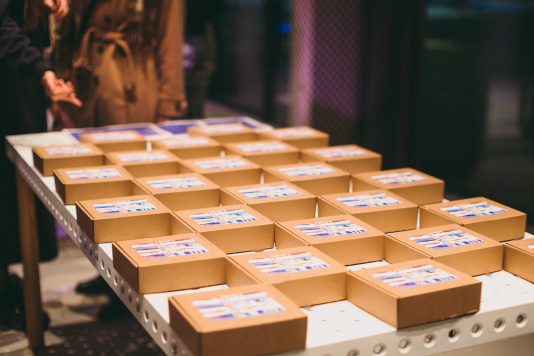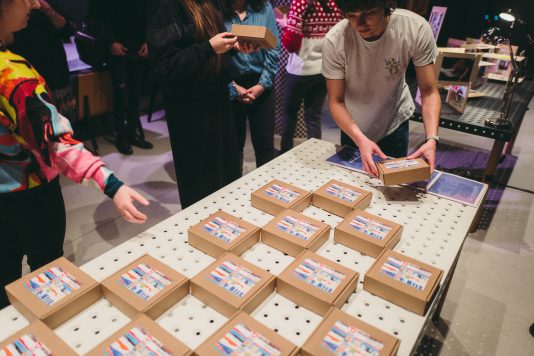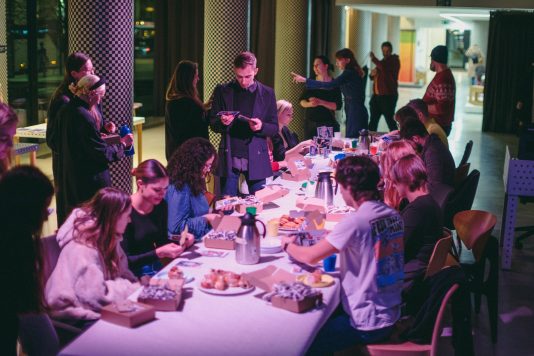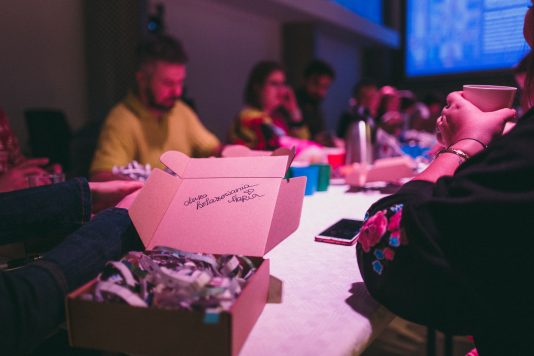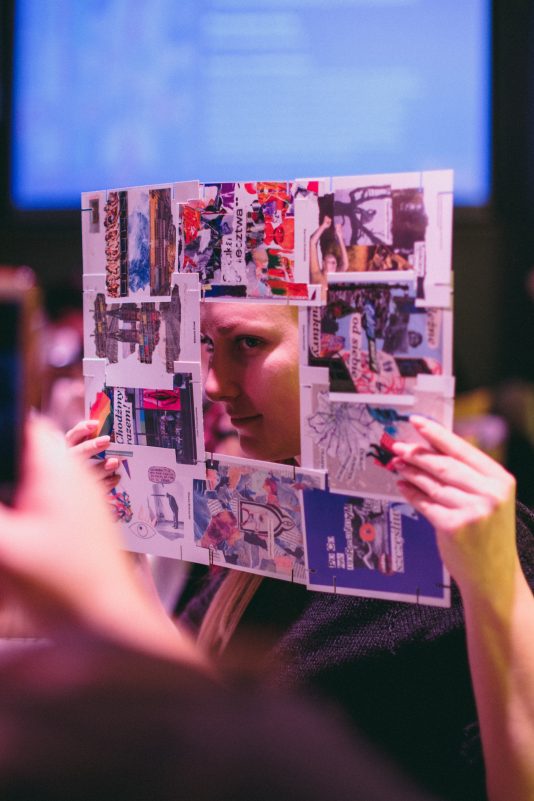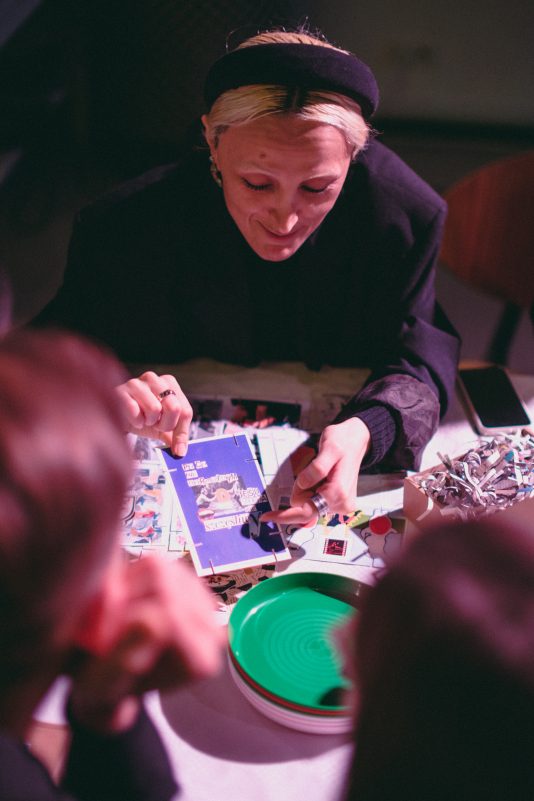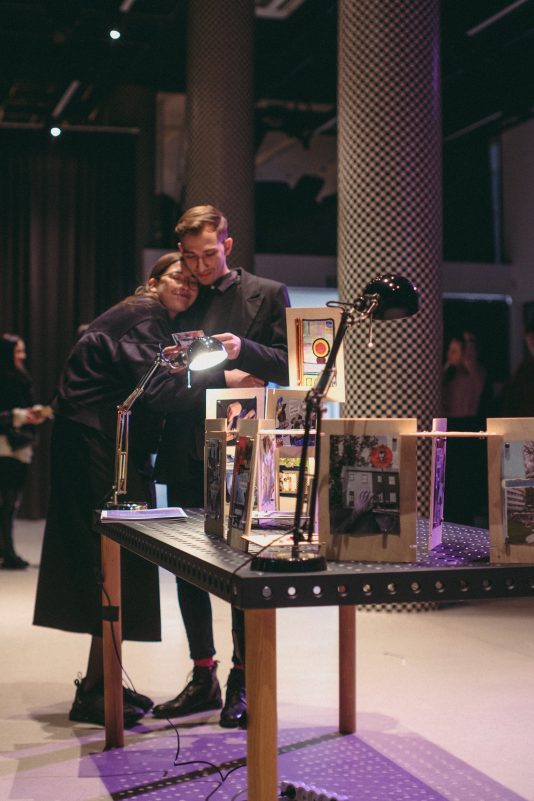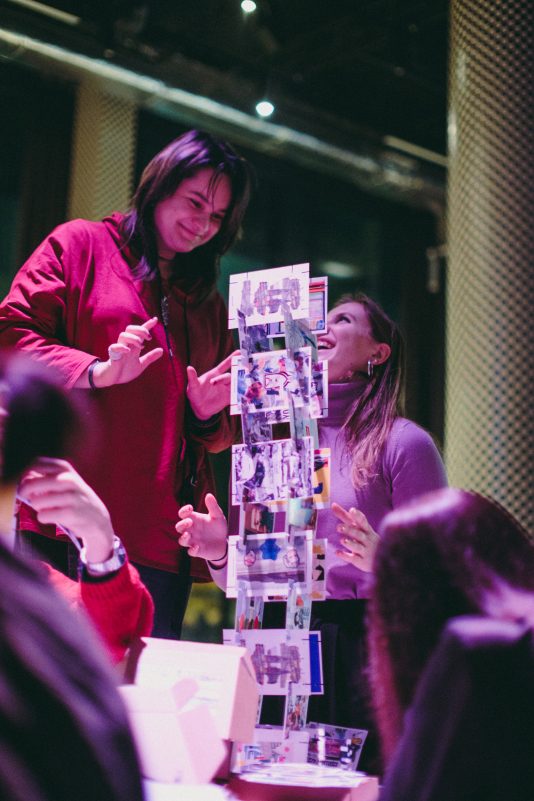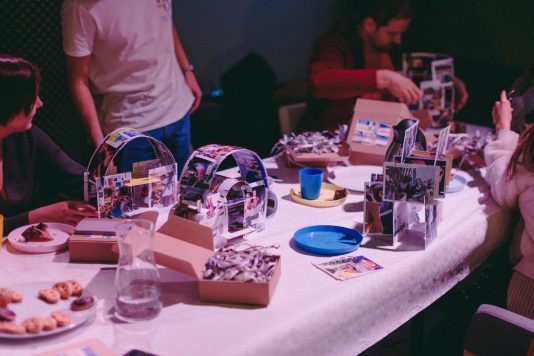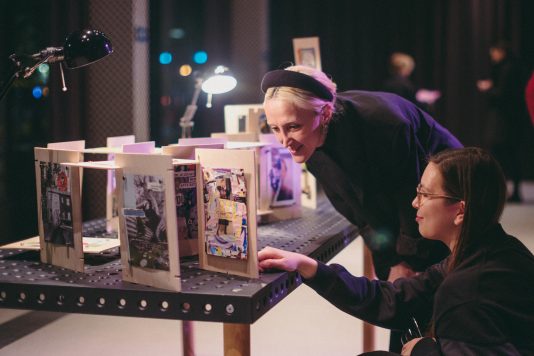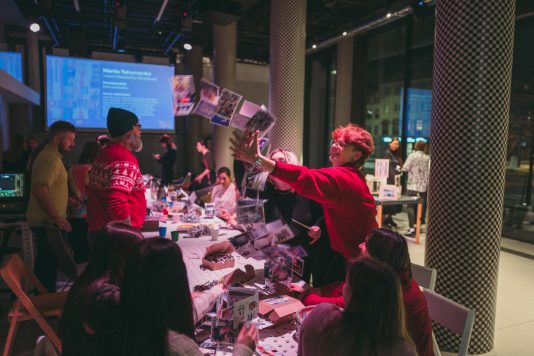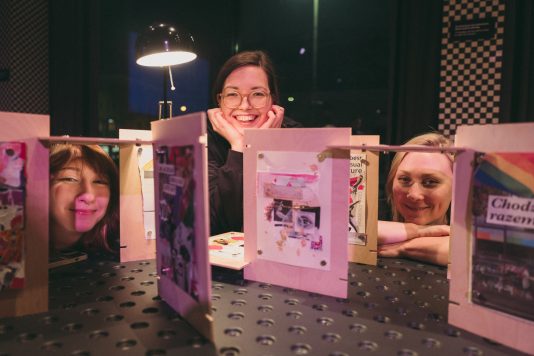Portable house. Patchwork story about moving and new residents of Wrocław
Wrocław is a city whose social portrait has been shaped by, among other things, population displacement and a years-long influx of new residents. From the moment it became a Polish city in 1945, it was seen by many as a temporary “home” that could be invaded again by the aggressors. And while the old challenges were overcome, new ones quickly took their place. Economic emigration to larger metropolitan areas and the war in Ukraine continue to bring new generations of newcomers to Wrocław seeking respite, shelter, work and future here.
These thoughts accompanied Maria Yakymenko during her residency at the Wrocław Institute of Culture. She decided to weave together the stories of the new residents of Wrocław in an artistic book, also called a spatial zine “Portable Home”, the pages of which are collages created during group workshops. The publication brought together important insights from many authors about the search for one’s place in the world in the age of globalization, in which the word home has acquired new meanings. For many people, it is identified with loved ones or pets, while for others it is a collection of personal items that can be easily packed up and taken with them to the other side of the world. In addition, the lack of attachment to the place of residence, permanent changes, rearrangements, renovations and migration themes often appeared in the stories told by the collage makers.
It is worth emphasizing that Mariia faced similar challenges. At the age of sixteen she left her hometown Kyiv and settled in Warsaw where she found her place in a small studio apartment in Żoliboż. Her observations and collages, which also appeared in the zine, tell the story of how she found herself in Poland, where she learned a new language and built interpersonal relationships from scratch. As the artist points out, collaging became an important way for her to deal with the situation and express her feelings. That’s why Mariia decided to use this artistic and self-therapeutic method in the collage workshops she conducted. In the process she could count on the support of local artist Małgorzata Grączewska, who has been working with the collage technique for many years.
The task of the participants in the series of meetings in Barbara, Wrocław, was to create an individual story about the city, their place of residence, objects and people important to the participants. Thus, the creative process envisaged not so much immersing oneself in Wrocław newspapers or printed magazines and creating beautiful compositions following trends, but evoking important subconscious images and memories and then translating them into a sensitive visual language. Mariia worked with both very new residents of Wrocław, as well as those who perfectly remembered the day of their move, which happened several or even a dozen years ago. At the first meeting, one of the participants, Melania Sulak captured the moment of her first arrival in Wrocław. It was a very foggy morning, and the buildings were covered with a milky coating. The author used tracing paper, which she glued onto sections of the façades of Wrocław’s residential buildings and the cathedral. Other collages also featured the city’s architectural landmarks, both more and less familiar to everyone, but the most interesting stories were about its sentimental nooks and crannies. There were also textures of domestic objects and photos of loved ones. One of the participants, Carolina Faust, a student who has recently lived in Wrocław, brought to the workshop a torn-out clipping from an ad “I’ll buy an apartment”. She mentioned that she associates Wrocław with just such ads. She has never seen in Brazil, where she comes from, such a large number of similar prints hung up in the urban space. She also admitted that she likes to watch ordinary activities performed by people, and during the first days after the move, her attention was drawn to a man who was vigorously ripping advertisements for buying an apartment off the poles. The ripped-out piece appeared in the first collage she made during the workshop. She also used this element in later works. It is worth noting that Carolina was not the only collage debutante in the group, and the desire to create at the shared table with Mariia and others stemmed from the need to share their experiences. Blanka Mokrzycka’s story was about the move to a new apartment, which was happening simultaneously with the workshop. At the time, the author stored most of her belongings in a cluttered car. Therefore, the collage she created consisted of many layers of newspaper fragments. The author recounted the frustrations of finding herself in the moving chaos. Her composition full of colours and textures fully represented the current state she was in.
In addition to more than eighty collages, there was also a two-part zine concept of combining micro-stories into a single whole. The first object, presented at the final event summarizing Maria’s month-long residency, resembled the architectural shape of a portable house. The small wooden modules of which it was composed had a connection system that allowed it to be arranged into different configurations. This allowed the viewer to decide how to connect the individual pieces, which were located on either side of the flat pieces. It could be said that the real game was between what was two-dimensional, i.e. the collages, and what was three-dimensional, i.e. the arrangement of the pages. The viewer was encouraged to interact with the publication, which required engagement and inquisitiveness, and even getting lost in the small passages. Some collages were also hidden on the “ceilings” and in the wall “slants” of the structure.
The second object – a spatial zine – was prepared as a gift for the participants. It consisted of 22 paper cards with notches. The artistic publication was produced in a small edition at a local Printing House run by Maciej Zaranski. Each page featured reprints of collages selected by Mariia and executed at the workshop. The carded double-sided “walls” invited the audience to build their own portable house. Therefore, during the final summary of the residency, thanks to the openness to interaction of those who came to the event, it was possible to create an intimate situation blurring the boundary between the audience, the co-creators and the artist herself. It was on her initiative, but also on the group’s need for interaction, that the idea of playing with an artist’s book was born. Just like at home, it was at the shared Barbara’s table, under warm intimate light, that the celebration of a unique and inclusive artistic process took place.
Resident and emerging artist: Mariia Yakymenko
Emerging Curator: Paulina Brelinska-Garsztka
Authors of collages in the zine “Portable House”: Mariia Yakymenko, Paulina Brelinska-Garsztka, Malgorzata Grączewska, Melania Sulak, Anonymous, Milena Buza, Daria Cichoń, Justyna Mądry, Laura Lempert, Valentina Shaiko, Julia Kiziniewicz, Julia Przenajkowska, Marina Mashtaler, Karolina Kozlowska, Kordian Pokrzewinski, Kalina Bańka-Kulka, Malgorzata Zadrożna, Ola Zegar, Kasia Szewczyk, Blanka Mokrzycka.
Place of residency: Wrocław Institute of Culture (WIK, Wrocław, Poland)
Local artist: Małgorzata Grączewska
Support for the production of the printed zine: Maciej Zaranski
WIK is a partner of the international MagiC Carpets platform co-financed by the European Union’s Creative Europe program, bringing together more than a dozen cultural organizations.
Curatorial text by Paulina Brelińska-Garsztka
